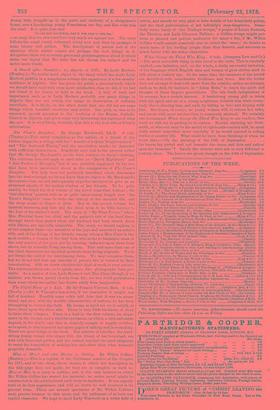When George the Third Was King. 2 vols. (Sampson Low
and Co.) —The most noticeable thing in this novel is the style. This is carefully studied,—an imitation, and, on the whole, a fairly successful imitation, of the language which English men and women of good station used to talk about a century ago. At the same time, the manners of the period are described with considerable liveliness and force. But the writer does not attempt to deal with more than the outside; makes no attempt, such as we find, for instance, in "Adam Bede," to tench the spirit and thought of these bygone generations. The tale itself, independent of its scenery, has a certain interest. A headstrong young girl is taken with the spirit and air of a young neighbour, defends him when every- body else is abusing him, and ends by falling in love and eloping with him. She hopes, of course, as young women will, to reform her rake, and meets with more success than is commonly attained. We certainly can recommend When George the Third Was King to our readers. One word we will say in parting to its author. Besides studying his Gold- smith, or whoever may be his model of eighteenth-century talk, he mast study nature somewhat more carefully if he would succeed in telling stories of country life. What could he have been thinking of when he
wrote this,—" On the morning of the 15th of September the leaves lay curled and red beneath the trees, and thin and yellow upon the branches "? Surely the seasons were not so very different a century since. The leaves are green enough on the 15th of September..


































 Previous page
Previous page